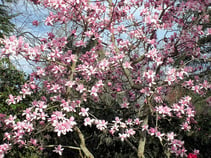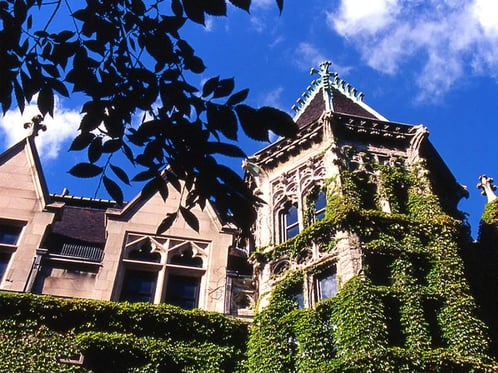 A team of researchers from the University of Chicago School of Medicine recently found that an ancient herbal therapy commonly used in Asia is effective in preventing certain heart diseases. (Image courtesy of Wikimedia Commons)
A team of researchers from the University of Chicago School of Medicine recently found that an ancient herbal therapy commonly used in Asia is effective in preventing certain heart diseases. (Image courtesy of Wikimedia Commons)
The molecule Honokiol, which is extracted from the bark of Magnolia trees, was found to be effective in protecting the heart from hypertrophy, which can lead to heart failure. The Chicago researchers discovered that Honokiol activates the protein SIRT3 that is involved with slowing aging, reducing stress, and regulating the metabolism.
|
RELATED ARTICLES: |
For this study, the Chicago research team injected Honokiol into mice and found that SIRT3 levels nearly doubled when a small amount of Honokiol was injected. The Honokiol protected the heart muscles from damage, reduced the growth of excess muscle cells in the heart, and prevented the heart muscles from stiffing and causing issues with the heart contracting.
University of Chicago professor and leader of the study, Mahesh Gupta, explained that “Honokiol, by increasing SIRT3 levels, effectively blocked both the induction and progression of cardiac hypertrophy in mice. It even mitigated pre-existing cardiac hypertrophy. This has the potential to play a significant role in the prevention and treatment of heart failure.”
Even though it is early in the research and there is much more to study, there is potential for Honokiol to be used as a therapy to treat hypertrophy and other heart diseases.
“Although we feel this is extremely promising, there is still much work to be done” said Gupta.

The University of Chicago (Image courtesy of Crimson3981 via Wikimedia Commons)
The University of Chicago is a highly ranked institution in terms of amount of funding received and research published and produced. In the 2013 fiscal year, the University received more than $274 million dollars in total R&D expenditures, and in the 2014 fiscal year, the University over $179 million in NIH funding. Departments at the University of Chicago that are well-funded include:
- Pharmacology - $18.8 million
- Medicine and Internal Medicine - $13.1 million
- Ophthalmology - $10.1 million
- Biochemistry - $7.1 million
- Microbiology, Immunology, and Virology - $4 million
* Data collected from the NIH RePorter
With so much life science funding being granted to the University of Chicago each year, as well as the immense amount of life science research being produced and published, Chicago is a strong research marketplace. Lab supply companies interested in meeting with researchers, lab managers, lab staff, investigators, purchasing agents, and post-doc students in this highly-regarded marketplace are encouraged to participate in the 1st Annual BioResearch Product Faire™ Event at UChicago on Tuesday, October 6, 2015.
BioResearch Product Faire™ Events give lab supply companies the opportunity to:
- Discuss and present lab products with active life science researchers.
- Demonstrate and promote lab supplies.
- Network with both researchers and other lab suppliers.
- Nurture new and existing leads.
- Get exposure, market visibility, and increase their brand awareness.
To learn more about participating in the University of Chicago event in October, visit the link below:
To find other events in Illinois and around the country, visit the complete 2015 trade show calendar here:










